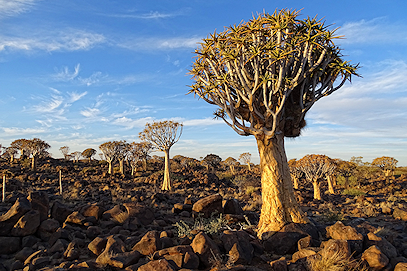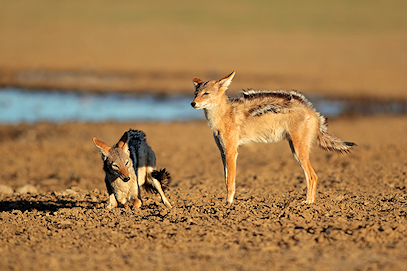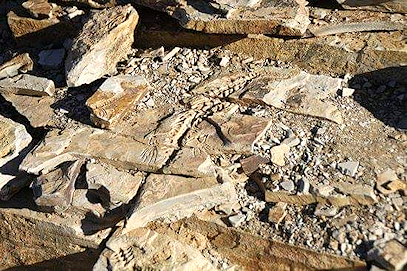Namibia's Kalahari
Help Me Plan- Home
- >
- African Travel
- >
- Namibia
- >
- Kalahari
Kalahari Destination Guide
The Kalahari Desert spans Namibia, Botswana, and South Africa—a semi-arid “thirstland” of red dunes, grassy valleys, and seasonal pans. In and around the Kalahari Basin, standout protected areas include Kgalagadi Transfrontier Park and Botswana’s Central Kalahari and Khutse reserves, famed for vast skies, the black-maned lion, and wide-open wilderness.
Getting to Kalahari Namibia
By Air: There are no scheduled commercial flights into the dunes themselves, though several lodges use nearby airstrips. Guests are typically welcomed at OR Tambo International and assisted to a flight to Windhoek Hosea Kutako International Airport; from there, a light-aircraft hop to your Kalahari lodge may be arranged.
By Road: The Kalahari occupies Namibia’s east. Distances between lodges are long. From Hosea Kutako International Airport, the closest Kalahari lodges are roughly 200 km away. If you are not flying directly to a lodge, private 4×4 road transfers showcase more of the country’s landscapes.
Weather & Best Time To Visit
Expect heat in summer and cold nights in winter. Rainfall is low and highly seasonal; Namibia’s Kalahari typically receives around 100–200 mm annually, with semi-arid criteria extending to ~250 mm. June–August offers easier wildlife viewing near waterhole; pack warm layers for chilly nights.

The Kalahari is home to Indigenous San communities, renowned for expert tracking and deep ecological knowledge. Traditional practices include ingenious water storage in ostrich eggshell and the use of seasonal wild plant. Cultural encounters today focus on sharing heritage respectfully and responsibly.
Reasons to visit the Kalahari
Unique Desert
Not just dunes—think undulating red sand broken by grassy plain and hardy tree. The richer vegetation (vs. true desert) supports rewarding wildlife viewing, from meerkat to antelope and apex predator.
Panoramic Views
Namibia’s Kalahari delivers big-sky vistas and long, glowing horizons. The Kalahari Basin’s iconic mega-pan lie in Botswana, while Namibia’s appeal is its rolling red dune, quiver tree, and photogenic desert light.
Follow the San
Learn how San knowledge of tracking, water sources, and seasonal food has sustained life here for millennia—shared today through guided experience that respect culture and conservation.
Experiences to Savor
Namibia’s Kalahari blends unique vegetation, nearby fossil destinations, and charismatic wildlife.

Quiver Tree Forest
At the Quiver Tree Forest, about 14 km northeast of Keetmanshoop, stroll among striking aloe and the dolerite formation known as the Giant’s Playground.
Sandy Safaris
Expect desert-adapted wildlife—from springbok, gemsbok, and red hartebeest to cheetah, leopard, and the famed black-maned Kalahari lion. Winter (June–August) often concentrates animal near scarce water.
Mesosaurus Fossil Site
Take a guided tour of the Mesosaurus Fossil Site outside Keetmanshoop—rock and reptile fossil that echo Southern Africa–South America connections in the continental-drift story.Useful Information
History
The Kalahari reflects alternating humid and arid periods across deep time, with dune field repeatedly reworked and ancient lake forming elsewhere in the basin. European traverse followed much later, but the region’s human story is far older, anchored by Indigenous knowledge adapted to scarce and seasonal water.
Wildlife
Kalahari species are adapted to heat and low, erratic rainfall. Look for springbok, gemsbok, red hartebeest, giraffe, wildebeest, meerkat, and predator like lion, leopard, and cheetah. Snake include Cape cobra and puff adder; raptor species range from secretarybird to eagle, owl, and kite. Many species track seasonal rain and resource.
Vegetation & Terrain
Often described as a semi-desert or “thirstland,” the Kalahari spans about 900,000 km² across Namibia, Botswana, and South Africa within the wider Kalahari Basin. Vegetation is sparse but resilient—grass, shrub, succulent, camelthorn, acacia, and quiver tree punctuate red-sand dune and sandy plain.
Activities
Explore by 4×4 to take in the region’s scale—red dune, quiver tree landscape, fossil site, and luminous sunset. Stargazing is superb. Guided game drive and expert-led walk deepen understanding of desert ecology and tracking.









